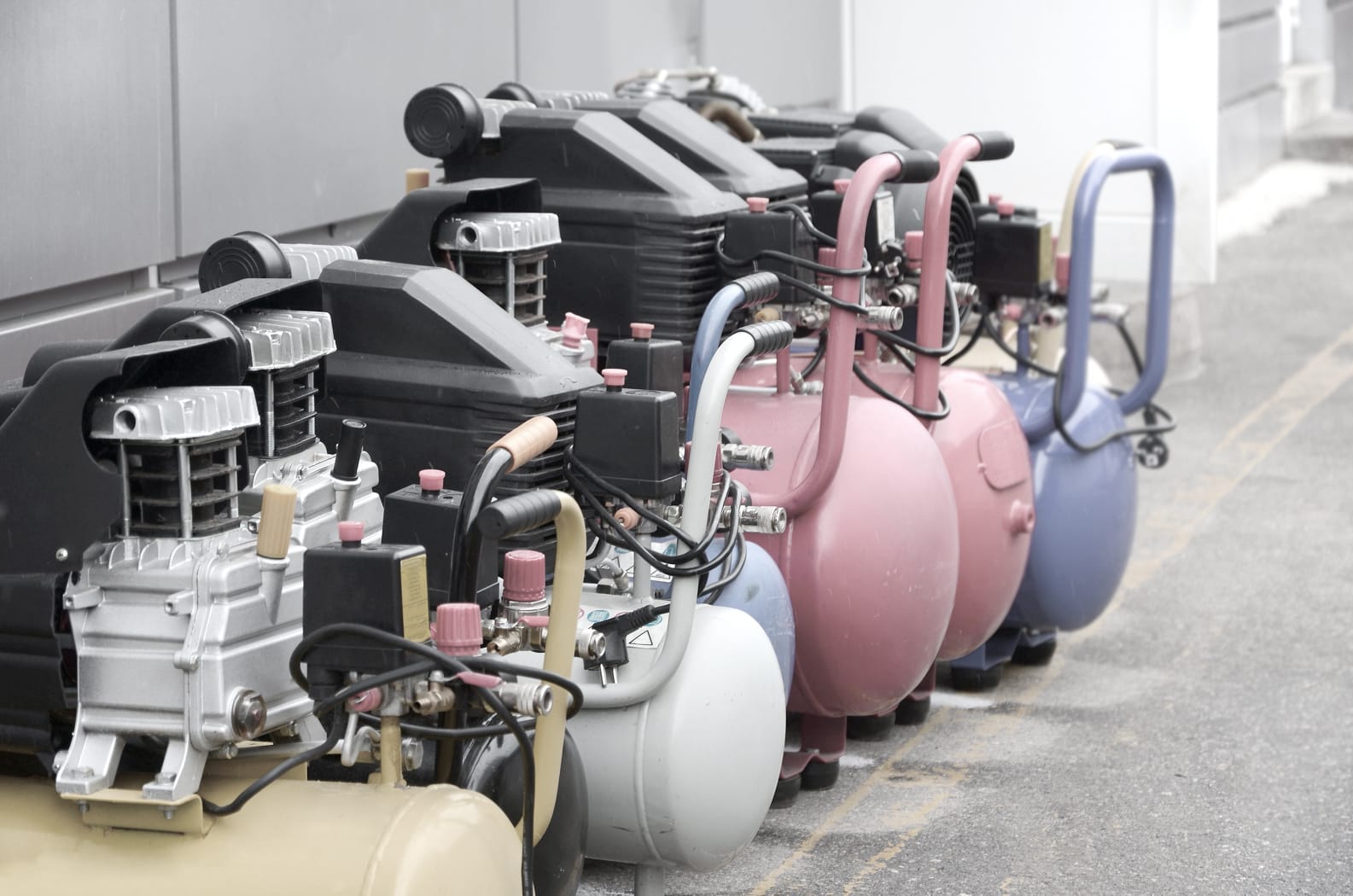Finding it tough to decide on air compressors? It certainly can be, until you know some basics. Here you go…
Identify the Intended Use
First — what is the intended air compressor for? Tires? Woodworking? Paint?
When you identify your main need first, the decision is made much clearer. Tires = smaller. Woodworking/painting = larger.
Choosing Based on use
For smaller uses like inflating tires, any smaller unit will suffice. Smaller units means a smaller HP compressor, and a smaller tank.
Got more work to do? Pneumatic leak down tests, for example? You need lots of air, and a compressor large enough to deliver it. That means higher HP and a bigger tank.
Understanding Airflow Requirements
Next, you need to understand what the tool you are using needs as a minimum airflow. This is measured in CFM… again, you can get into the whole mechanics of the term, or… forgive me if I’m a guy that says check it out on the internet.
Just know this: A nail gun may need 2-4 CFM at 90 PSI. A spray gun? It might need around 12 CFM at 90 PSI. Bottom line is, find out how much your tool requires, and knuckle down to it.
Determining Air Delivery
How do you determine how much air it can deliver? That’s by the pressure valve setting, and is measured in PSI. Pounds per square inch.
Tank Size
Keep tank size in mind too! Whenever a customer asks about an air compressor for sale, he or she needs to remember that a tank is there to store air. If you need it only infrequently, and for a short period of time, get a small tank, only a few gallons. If you need it often, and continuous run time too, for example sanding or automechanic work, get a bigger tank. Less wear and tear, and an easier, faster job for you.
Brad nail? Or quick air refills (sport balls, bike tires, air mattresses, etc)? Then maybe 1-6 gallons is for you.
Long-term use? Grind, sand? Maybe auto repair applications too? Sounds like a 20+ gallon unit is what you need!
Portability Considerations
Be careful though, especially if you get a compressor for something like sanding an auto body or sandblasting — try to get a 20 gallon compressor that is portable!
And keep in mind — a portable air compressor is ONLY worth it (money well-spent!) if it’s actually easy to carry. You need something that’s truly portable and can be of use whenever you need it.
Oil-Lubricated vs Oil-Free
Oil-lubricated vs oil-free is another aspect you need to consider.
Oil-lubricated machines are quieter but need regular maintenance—they also have a longer product life!
Oil-free models on the other hand need minimal maintenance but can become noisy as they get older—great if you want something that’s easy to take care of though!
Electric vs gas-powered: which is better?
Electric machines require an outlet but are perfect for in-door use as there’s no exhaust emission.
Gas-powered options have wheels but can get extremely noisy; can’t be used indoors either—go for this if you’re someone with a variety of outdoor projects on hand!
Noise Level
No one likes having a noisy bumble sound running in the background!
Always check the machine’s decibel levels before you purchase; a quiet machine can save your ears from the discomfort of constant noise! It should be of less than 70 dB(as) to ensure a calm and quiet—essential if you have plans of completing projects at night near any living units!
Manufacturer Credentials
Give a careful look and don’t brush off the manufacturer’s credentials; it shows the products’ durability and customer-service!
Look for well-known manufacturers as it assures your machine will work great for a long time to come. Also that in case of replacement or repair of parts, options are guaranteed!
Price and Specifications
Price may be an influencing factor but don’t close in on a product without considering the specifications for your buck, a well-spent buck!
Make a wise investment on a model that works for you and you won’t be investing again on a better one. You won’t be shutting down a project since the machine gave up all of a sudden!
Final Thoughts
All in all — make your choice based on what you need and keep the above information in mind before you finalize the purchase!
